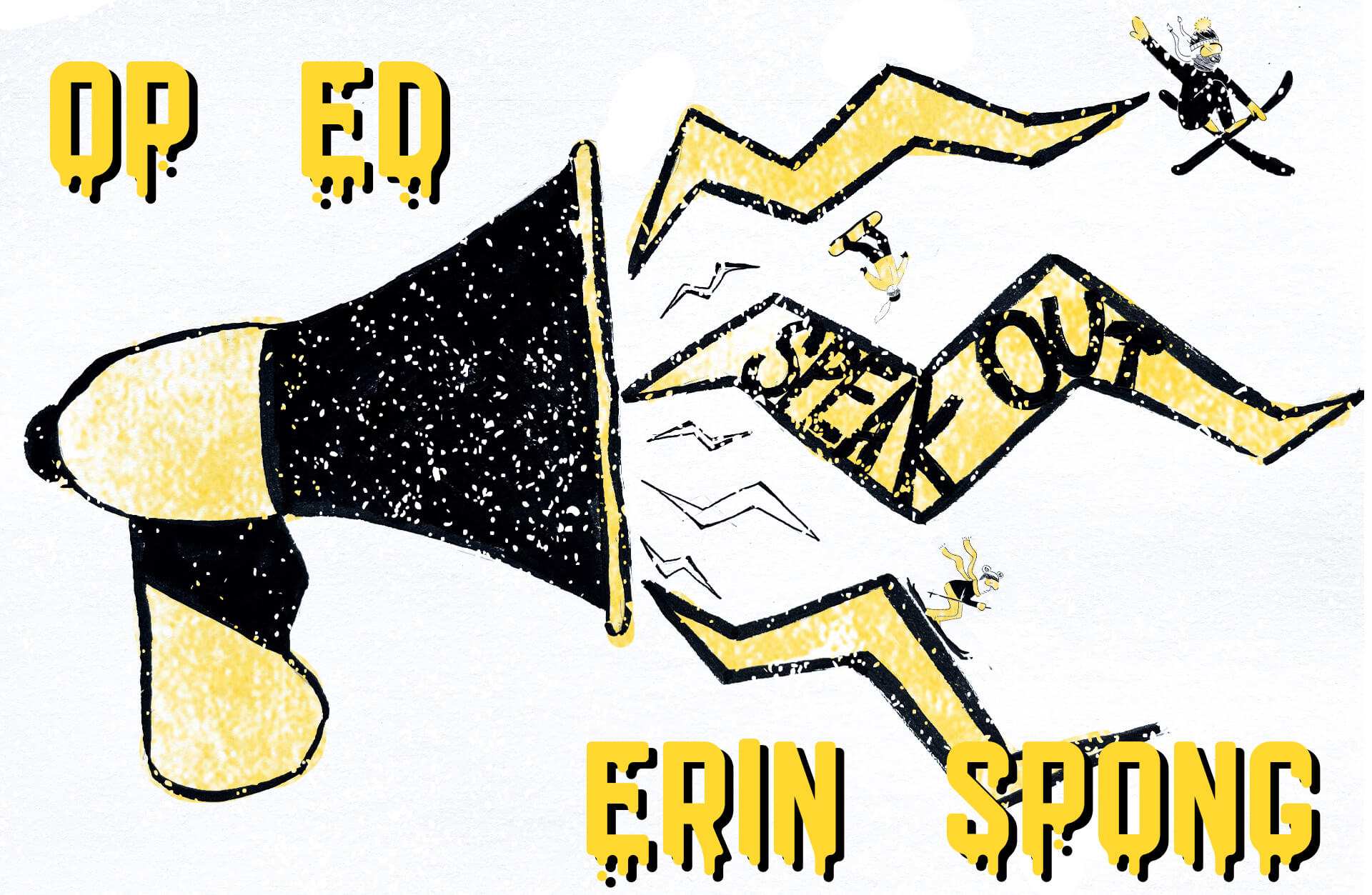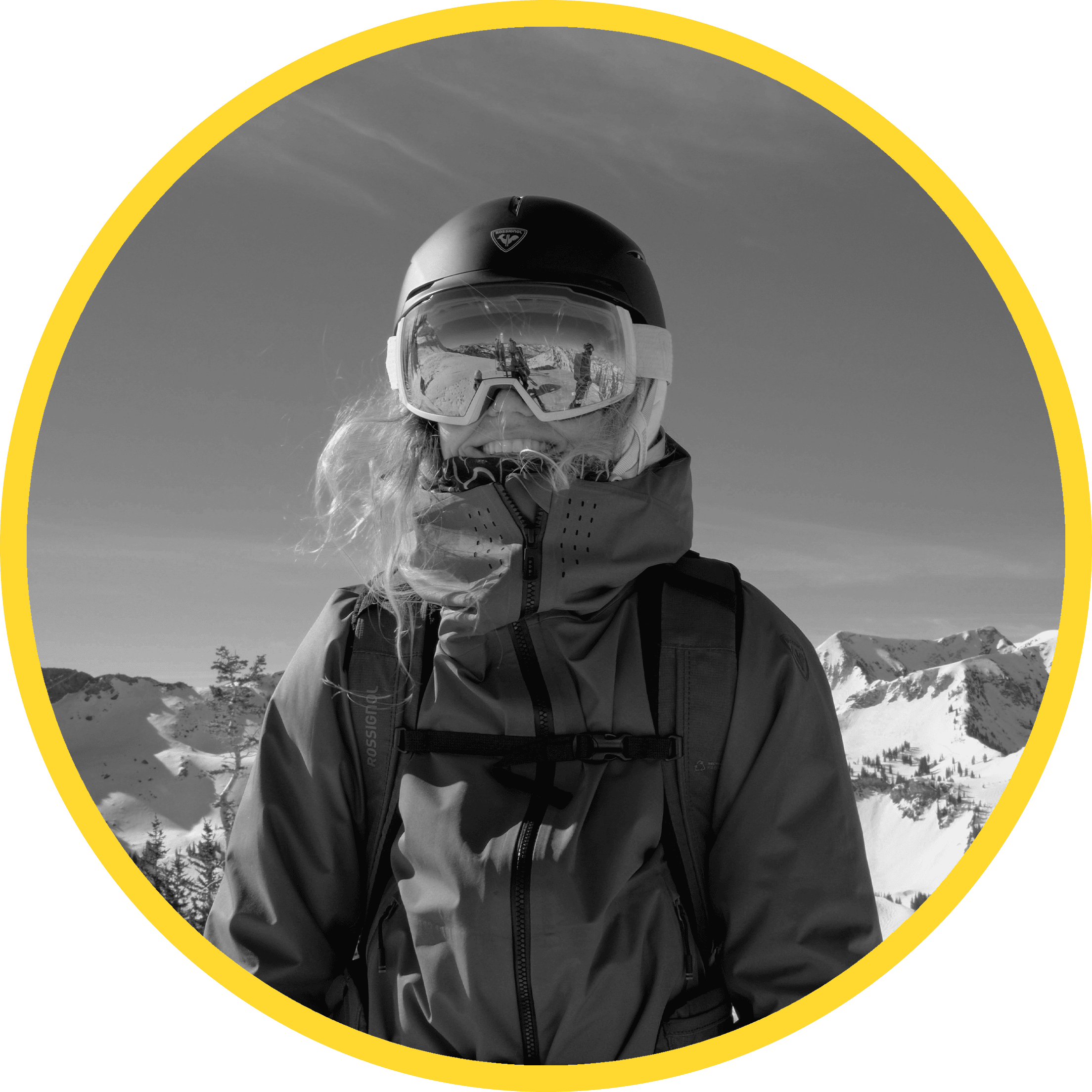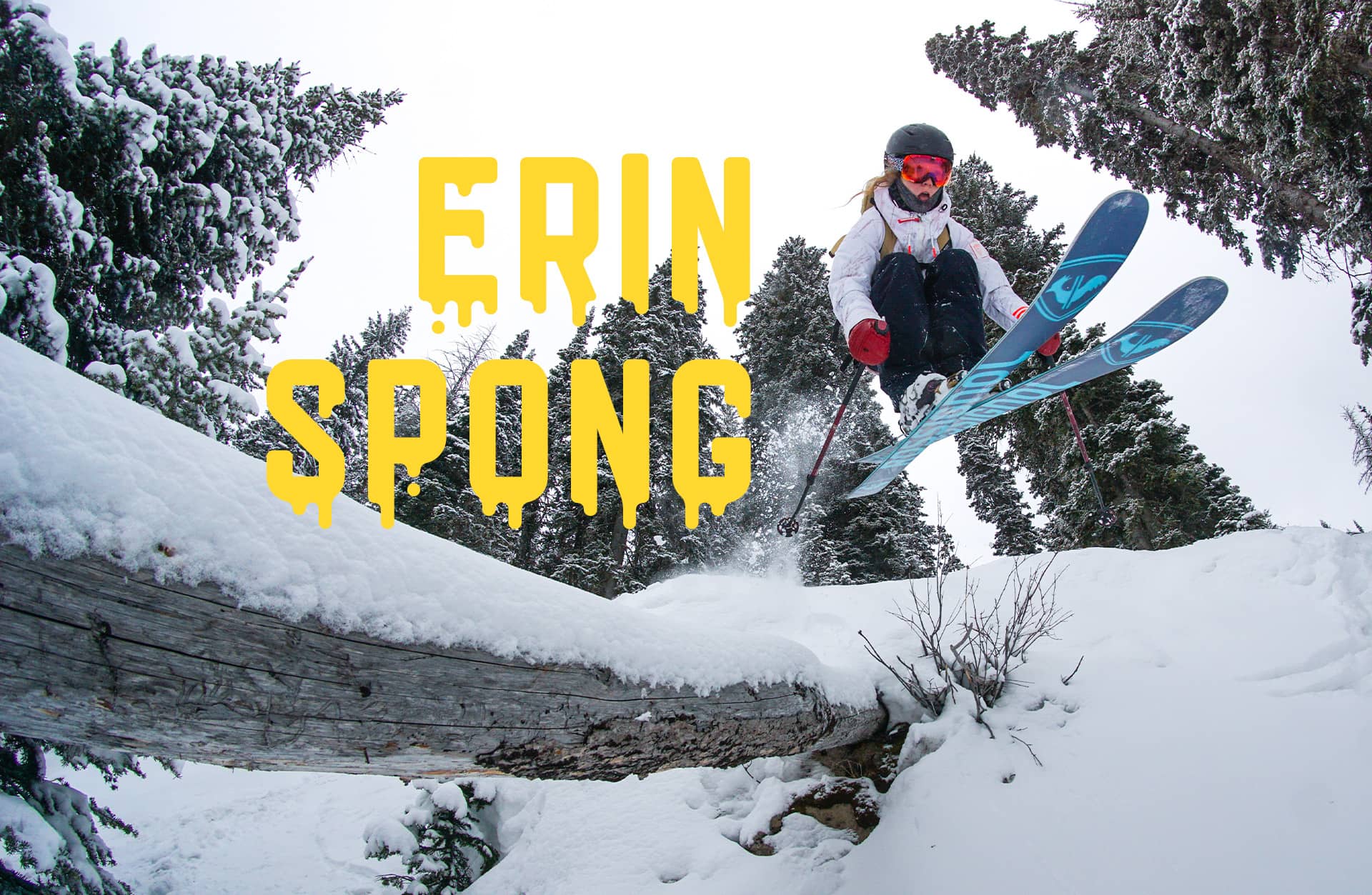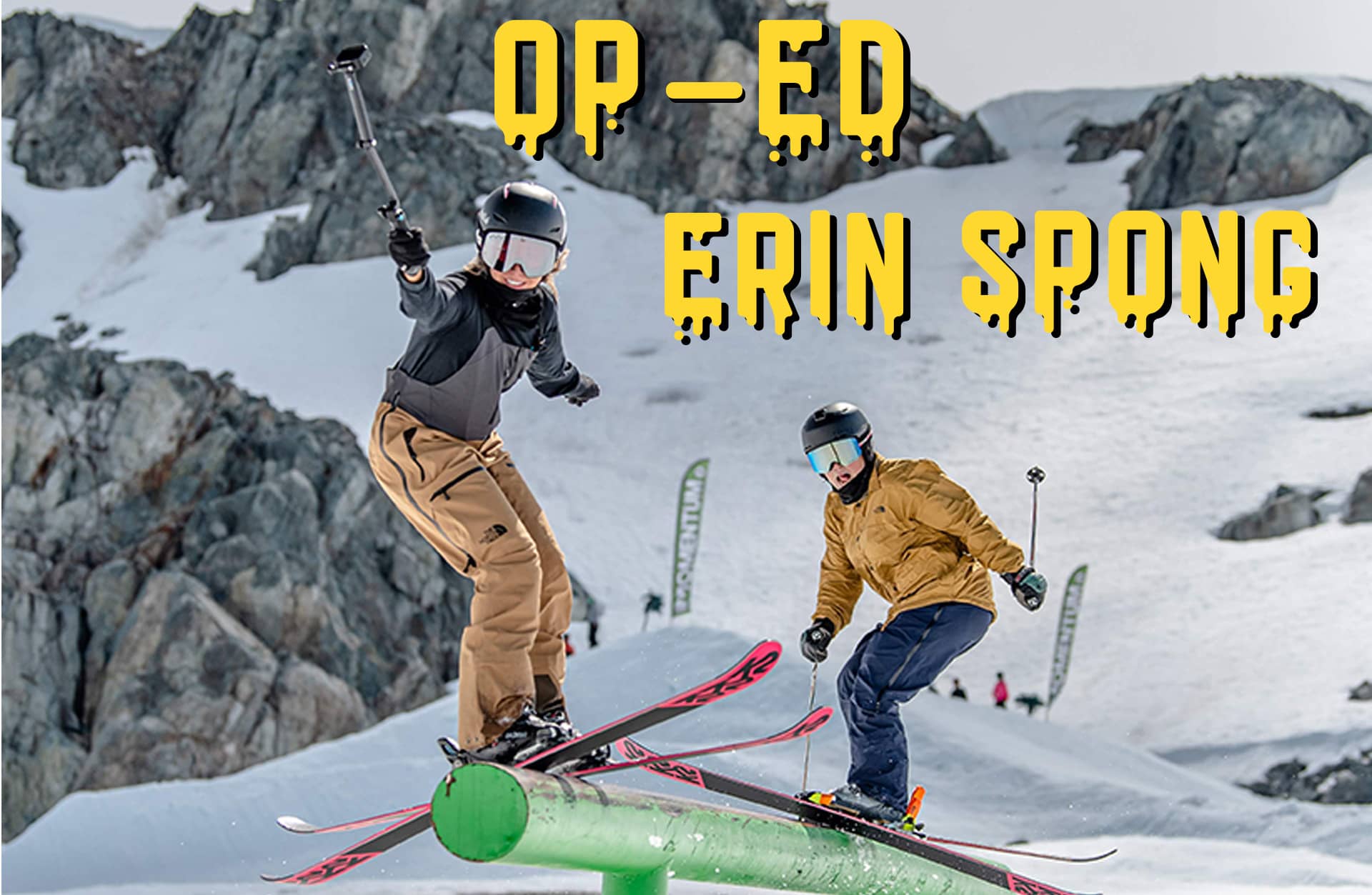SNOW // 01 SEP 2023
TAKE A LAP IN HER BOOTS, WILL YA?
Imagine for a moment, if you will, that you’re sitting in your (cis-white male) Creative Directors’ office. It’s your one-year review as an advertising copywriter and up to this point, you’ve won most of the client pitches compared to your (cis-white male) counterparts. You’re expecting a good review and possibly a raise but instead you’re given a pungent slap on the wrist. “You’re not married, and you don’t have any kids, so you really should be the first one in and the last one out every day.”
Imagine being 13 years old, hyped on skiing, but experiencing horrible boot and foot issues. Instead of the (cis-white male) boot fitter taking your qualms seriously, he chalks it up to “not being able to handle break-in pain.” After hearing him laugh at you in the back of the shop with his other (cis-white male) colleagues, you get so embarrassed you give up skiing for multiple years until your own engineering education helps you figure out you have an extra bone in your foot—the root cause of your excruciating pain—and what boots work with your unique anatomy.
Or imagine you finally built up the courage to throw that intimidating trick on a natural feature. It happens to be under the chair, and you happen to land it, but instead of riding that unbelievable high back down to the lift line, you’re immediately thwarted by a comment from above. “Show us your tits” echoes in your mind to this day.
The thing is, unless you’re a cis-white male, you probably don’t have to think too hard to imagine these scenarios. As you can probably tell by the experiences of myself and others in the industry, it’s a thread that weaves all women and female-identifying humans together. We are perceived as little more than what our gender dictates for us and there is nothing we can do about it. Except one thing: We can talk about it.
This past season, I had one of the worst (sexist) experiences of my life—at least, since my Creative Directors diminished my value as a human to being a wife and a mother. And let’s be clear, neither of those titles excite me. I linked up with a cis-white male creative based out of Boise. I had met him in the ski industry as a contract photographer for a ski resort in Southwest Idaho, but he was looking to delve into the film side of content creation. I knew I wasn’t going to have much budget to work with, and he wasn’t going to charge his photo rate to try his hand at filming, so we linked up to execute the video project I had come up with. To his credit, we successfully sold the project to Visit Idaho.
DÉRIVE, which is set to drop in January on Visit Idaho’s YouTube channel, was intended to be a predominantly backcountry ski film with supplemental footage at Pebble Creek and Kelly Canyon—Southeast Idaho’s independently owned ski areas. While I’m pleasantly surprised with the final product, the process of creating this film will always be tainted by the actions of my project partner.
One of the best parts about Pebble Creek, my home ski area in Pocatello, Idaho, is the incredibly easy access to backcountry terrain from the resort’s boundaries. A 400-vertical-foot climb from the top of the chairlift places you on Bonneville Mountain’s saddle and you can literally rip skins from there to drop over to the backside. You can also traverse the frontside of Pebble Creek to the north and south, duck the boundary ropes and plunder steep, cliffy terrain that loops back down to the main lift (if you know where you’re going). Pretty ideal for backcountry filming, right? Well, only if you train in the off-season and maintain your fitness throughout the winter—two things my project partner failed to do and failed to communicate. We ended up only filming in the backcountry for one day because my filmer couldn’t hike for more than 100 vertical feet without stopping. My boyfriend had to guide us out at the end of that day because my filmer was too weak and too slow to hike out the way we came. A complete liability and total disappointment, I ended up having to hire my friends separately to get the backcountry shots I wanted. It doesn’t end there.
Collectively, we spent six days filming together all season. It didn’t take long to notice every time he talked about a woman—athlete, client, colleague—of any age, it was solely about her looks and sex appeal. Even watching the X Games on my living room couch. Every female athlete who dropped into the 22-foot superpipe was not recognized for her athletic accomplishments, but whether he would “bone” her or not.
And then it came time to edit the project.
When I initially pitched this ski film to my project partner, and then to Visit Idaho, the plan was for me to edit the final product. I genuinely enjoy video editing and wanted to maintain creative control but when my filmer asked if he could edit since it was his film work, I relented with the caveat that I would have editorial influence throughout the entire post-production process. I’m sure you can guess, by now, how that turned out. Without ever giving my approval, my filmer sent a rough draft of the final edit to our client at Visit Idaho and when I requested edits to the draft his response was infuriating: “The client has already seen and approved what I have made, so my hands are tied.” Thankfully, our client at Visit Idaho is a Queen who recognizes and champions for other Queens. All my edits were made but my filmer and I no longer communicate without a mediator.
I can’t help but believe all these experiences with this individual happened because he was working with a woman. Would he feel like he could keep up with a male athlete in the backcountry without any sort of physical training prior? Would he rip away creative control so nonchalantly from a male athlete he respected? Would he intentionally make a male athlete uncomfortable by talking about that same gender in such a crude manner? My honest opinion is a hard no, he wouldn’t.
I can’t take back what happened last season, but I can share my and other women’s experiences to help all women recognize and feel empowered to speak up when scenarios like this are happening to them. This is not normal behavior. This is not acceptable behavior. Whether you’re a man or a woman, when you see shit like this happening, say something. The more we talk about it, the louder we get. And the louder we get, the harder it becomes to ignore.





